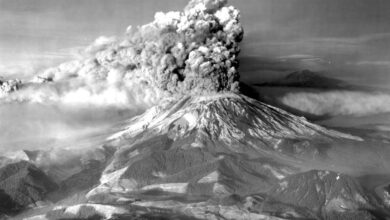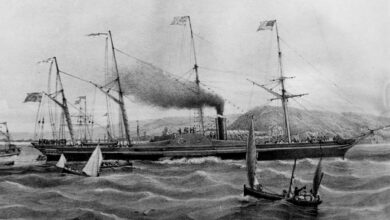Touching the Sky: The Eiffel Tower’s Monumental Rise to Global Icon
On March 31, 1889, Paris celebrated the completion and unveiling of the Eiffel Tower, a monumental feat of engineering that would become one of the world’s most recognizable landmarks. Designed by French engineer Gustave Eiffel and his company for the 1889 Exposition Universelle (World’s Fair), held to commemorate the centennial of the French Revolution, the Eiffel Tower stood as a symbol of French creativity, technological prowess, and the spirit of the Belle Époque era.
Standing at an impressive height of 300 meters (about 984 feet) at the time of its completion, the Eiffel Tower was the world’s tallest man-made structure, a title it held until the completion of the Chrysler Building in New York in 1930. Constructed primarily of wrought iron, the tower’s innovative design and the use of new construction techniques were a testament to the possibilities of modern engineering.
Despite its now-iconic status, the Eiffel Tower’s construction was criticised by many Parisians, French artists, and intellectuals. Critics deemed it an eyesore and argued that it detracted from Paris’s traditional beauty. Gustave Eiffel, however, defended his creation by emphasizing its scientific and architectural significance, predicting that the public and the artistic community would eventually embrace it.
The tower was constructed in just over two years, an extraordinary achievement for the time. It served as the entrance arch to the 1889 World’s Fair, attracting millions of visitors who marvelled at its scale and the panoramic views it offered of Paris. The Eiffel Tower was initially intended to be dismantled after 20 years, but its value as a radiotelegraph station and its growing popularity ensured its preservation.
Over the years, the Eiffel Tower has become a global symbol of love and romance and a beacon of French culture and innovation. It attracts millions of tourists annually, serving as a testament to its creator’s vision and the enduring appeal of Paris as a city of art, history, and romance.
The completion of the Eiffel Tower on March 31, 1889, stands as a pivotal moment in architectural history. It marked the advent of modern structural engineering and the use of iron as a primary building material. The tower also reflects the broader themes of the Industrial Age, including celebrating technological advancement and exploring new artistic expressions.
Today, the Eiffel Tower is not just a tourist attraction but a symbol of human achievement and creativity, a reminder of the power of innovation to inspire wonder and admiration across generations. As we commemorate the anniversary of its completion, the Eiffel Tower continues to inspire architects, engineers, and dreamers around the world, embodying the spirit of possibility and the enduring beauty of human ingenuity.





